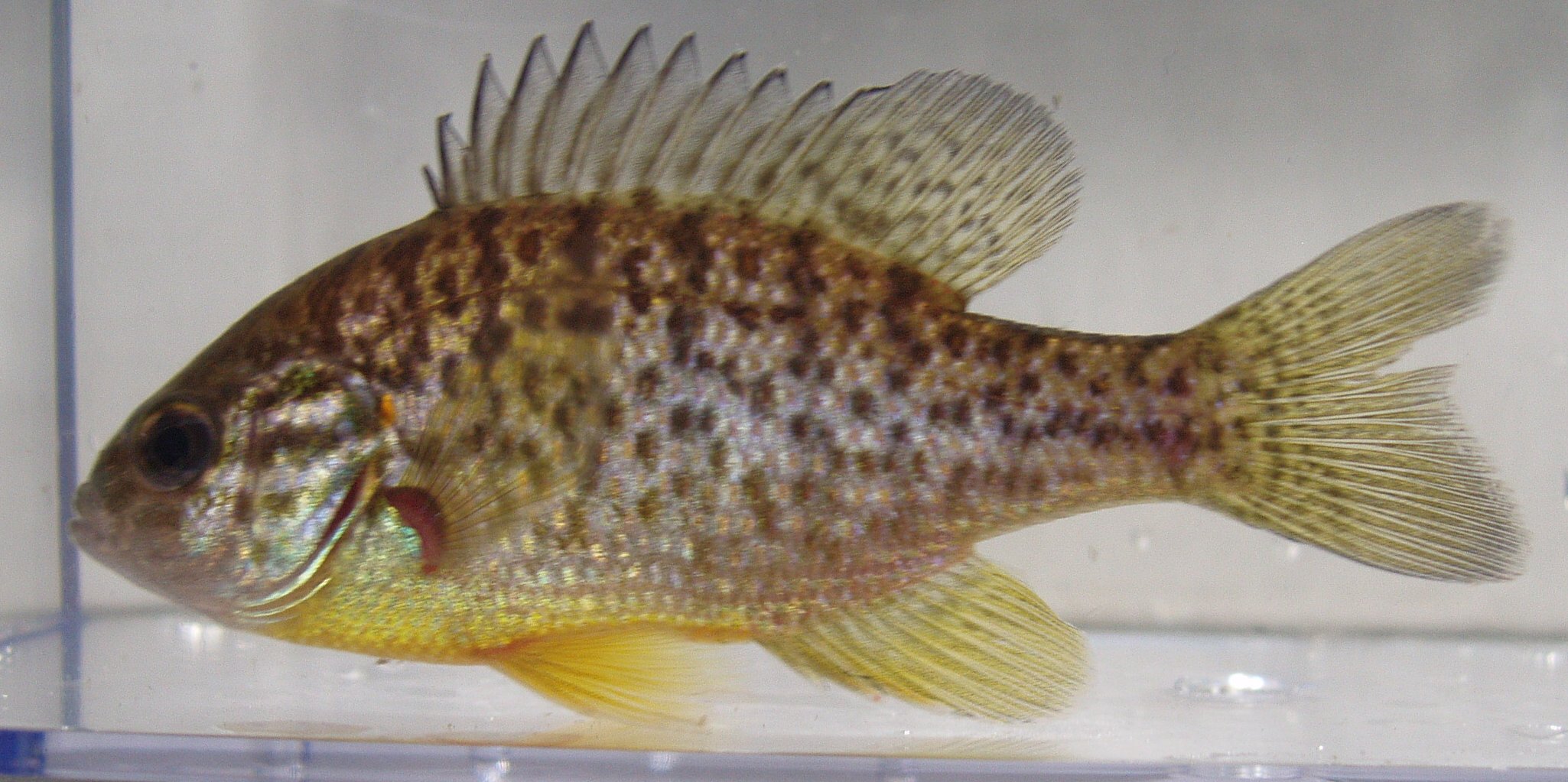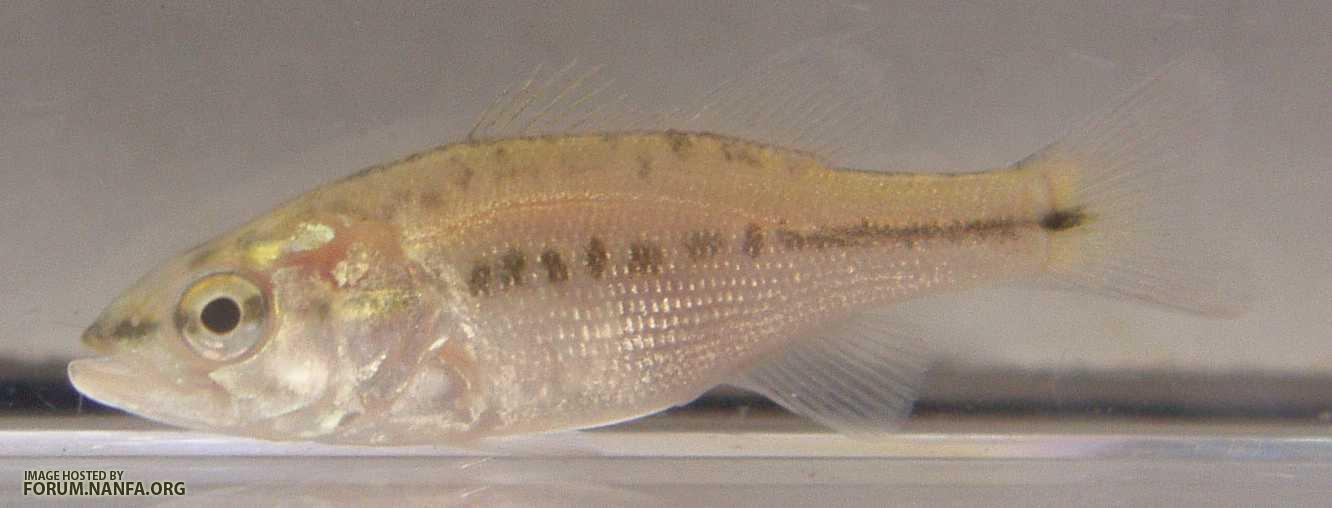Okay, so I went back to the same stream a couple times since the earlier post above, yesterday, and two weeks ago (okay, 15 days ago).
Three weeks ago, it rained all weekend, Thursday through Monday, often heavily. Two weeks ago it was exactly the same thing. The water in the stream was high (at least 2 feet higher than normal), extremely swift, and very brown with sediment. I wanted to get in there, if for no other reason, to collect some feeders. I know there is some disagreement on this, but I prefer wild-caught feeders. Store-bought feeders, if kept in an aerated bucket for use over several days, are so filthy you have to change the water daily, and many die anyway. Wild-caught feeders are clean and hardy. They seldom require a water change before being given to the pickerel, and none die.
Anyway, I needed some feeders and was a little short, so store-bought were out of the question at the time. During a brief hiatus in the storm two Saturdays ago, I ventured into Turtle Creek looking for feeders. I picked a spot further downstream of my previous spot in the park. I had noticed on my way to my mechanics place, when I took my van for its annual inspection as required under Pennsylvania law, that there was a little access road leading to a gas well down the street from the mechanics place. It looked like I could park down that road by the gas well, and walk right up to the stream from there. So I did. I did not take the children this time. With the water so high, it would overtop their rain boots (buying them waders is still on my financial agenda). Besides, I'm sure they would have a struggle with the swift water. The spot is a little bit upstream of the confluence with Brush Creek.
I ventured into the water, and worked my way downstream from my entry point. At this location, there is a somewhat permanent sand and gravel bar about 8 feet from the shore, held in place by vegetation. Even though it was submerged due to the high storm flow, I could see the top of the vegetation growing on it. It provided enough protection for the shoreline that the water was flowing slowly and calmly along the shore, even though it was a raging torrent in the center of the stream. (Believe me, I was not stupid enough to try to wade out into the thalweg!) There was lots of overhanging vegetation, logs, and undercut banks. I worked these cover areas with my dipnet, and found plenty of feeders. It was a subset of the species list I found before: blacknose dace, creek chubs, and white suckers. No darters or catfish this time. A couple creek chubs and white suckers were large, and I threw them back, both because they were unsuitable feeders and because I want to keep breeding adults in the stream to preserve the population. Just the same, it was a very productive hour before darkness set in and the rain returned. I went home with enough feeders to last me a week and a half.
I returned to the same spot yesterday. The water level had gone down to normal flow. I could have brought the children this time, but they had spent the night at their grandparents so I went alone. The weather had been below freezing for about a week and a half. It got up to 38 degrees yesterday, and is back into the 20's today and for the extended forecast. So I got one warm day to go out. (I know some of you rebs may not see 38 as a warm day. But when you get accustomed to highs in the 20s, 38 is very warm and comfortable. I was pleased.) I worked my way upstream from the entry point this time instead of downstream. Yesterday was not so productive as two weeks earlier. Much of the vegetation that was overhanging, due to the drop in water level, was no longer submerged. There was still a significant amount of overhanging vegetation and undercut banks to provide fish cover. But due to the cold weather we have experienced lately, there was a lot of ice along the shoreline, limiting access to these cover areas. And of course, breaking the ice scared the fish away. I did see one swimming away as I broke some ice, plunged my dipnet in quickly, and got it! But typically, I wasn't able to get many feeders this time. I will be gong to the
LFS tomorrow

Even where I did have access to ice-free cover areas on the bank, there were not so many creek chubs and blacknose dace as last time. So where did they all go? Surely I did not exhaust the supply two weeks ago. There were plenty, and I only worked one small section of the stream. I'm sure I missed a lot. And I did not work the same section this time. I have no doubt the fish were there. Some were probably hiding under the ice. But I theorize that most of them were most likely out in the flowing portion of the stream, and would have been taken with a seine. I suspect I found so many when the water was high two weeks earlier, because they had taken shelter from the torrent by hiding along the bank. The flow was fairly gentle yesterday, and there was no need to seek shelter. Does this make any sense?
The big surprise yesterday was that the species list for this stream grew larger. I found two juvenile pumpkinseeds in there. I read in
Chapter 4 of Coal Mine Drainage Prediction and Pollution Prevention in Pennsylvania that some of the fish I found tend to be the first fish found in streams recovering from AMD. So this is a further sign of the stream's recovery. I only hope the trend continues. So now the species list for the stream is:
- blacknose dace
- creek chub
- yellow bullhead
- white sucker
- fantail darter
- pumpkinseed
Let's hope this list continues to grow.
Here are some photos of the larger of the two pumpkinseeds. It is about 2.5 inches, snout to caudal peduncle.


I have this theory that I should find more biodiversity in the mouth of this stream, due to the influence of the Monongahela River. The Monongahela River is too deep to wade with a seine or dipnet, and due to the industrial nature of the valley here in Allegheny County, access points are few except at public boat launches. I intend to look for some access points this spring, though, hoping to dipnet along the shore or find some backwaters that I can wade. Anyway, I figured that there should be some fish from the Monongahela River in the mouths of streams like Turtle Creek. However, the lower Turtle Creek valley is just as industrial as the Monongahela River valley. I found one possible access point on Google Earth, hoping to get in there and wade downstream past the USS Edgar Thomson Works to the mouth. But alas, I found a fence along the road, and a gate across the road. There appears to be no way to get in the stream anywhere near the mouth to test this theory, although I will try to figure out another spot. Anyway, does this theory make sense?












